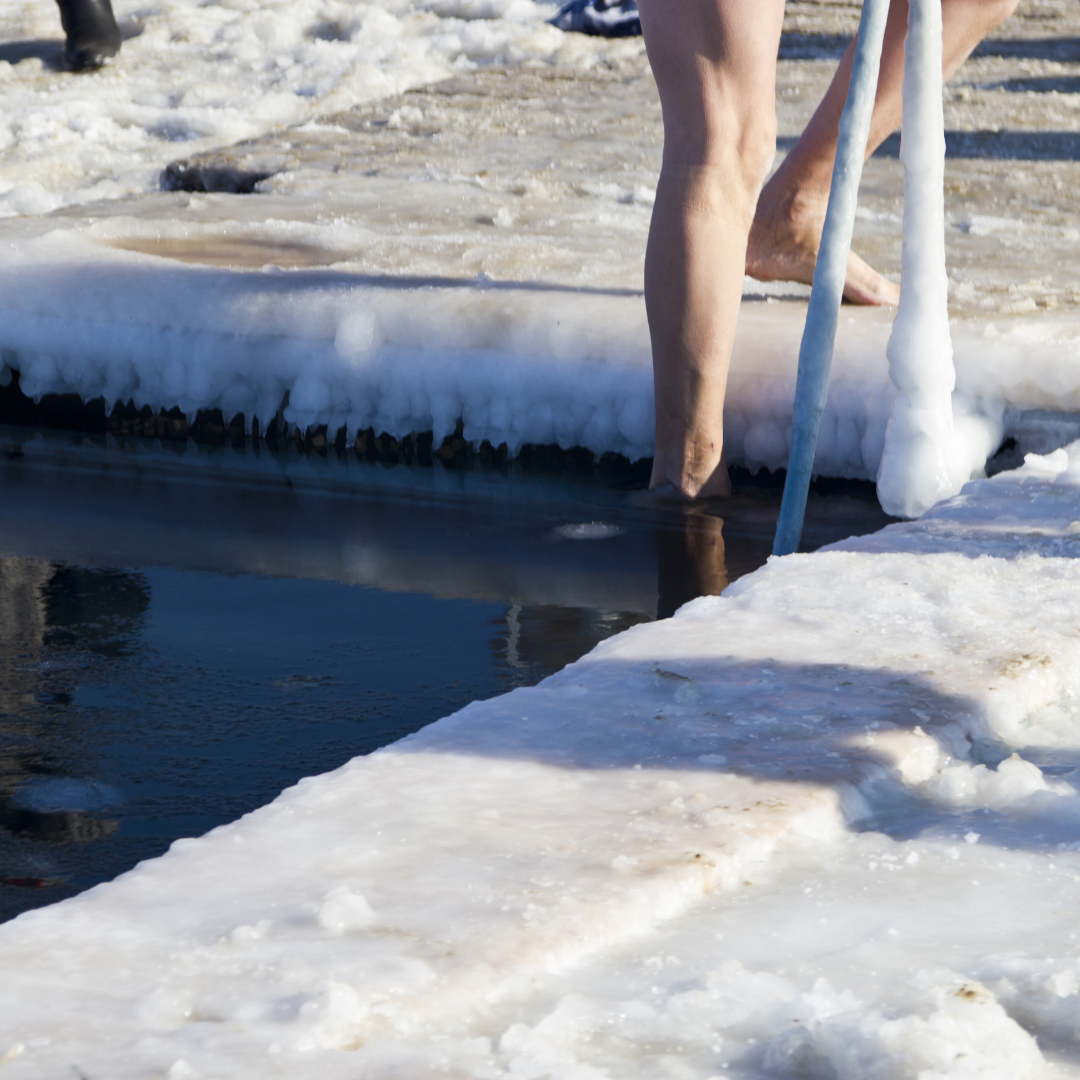Ice baths for recovery, ice baths for mental health, ice baths even for skincare! There are a lot of reasons why you might want to start putting cold water immersion into your daily or weekly routine, but there’s one glaring question: how do you actually take an ice bath?
Is there a proper way to do it? What should I be cautious of?
In this article we’ll walk you through:
- Why ice baths can be good for you
- Some safety tips
- What equipment you need and any preparation required
- Getting into the ice bath itself
- How long to stay in the ice bath
- Aftercare tips
Why ice baths can be good for you
We have written a comprehensive list of ice bath benefits which you can read here, however we’ll run through some of the most compelling ones now.
One of the most coveted effects of cold water exposure is reduced inflammation throughout the body. These days inflammation is being found to lead to a whole host of illnesses and discomfort, and people are striving to eat anti-inflammatory foods to combat this. Ice baths are a great way to consistently reduce inflammation throughout your body which can help not only with general health, but can also be utilised to assist in recovery or help to ease chronic pain.
Improved circulation is another benefit people are very interested in. There have been studies showing that ice baths may lead to better circulatory function due to nitric oxide production. Other studies say that due to the fact that cold water immersion results in vasoconstriction (the tightening of blood vessels), and then vasodilation (the relaxing of these blood vessels after getting warm again) that ice baths are great for exercising the circulatory system kind of like flexing a muscle.
A maybe less focused on benefit of ice baths is their effect on mental wellbeing, and even sleep. Getting into an ice bath can be somewhat of a meditative experience, as you’re forced to think only of your breathing and stabilisation of your body. This study looked at the effects of cold water immersion and found that there were beneficial effects on cortisol production and heart rate variability, which may indicate improved stress levels.

Safety is important
While ice baths can be a powerful recovery tool, it's important to take certain precautions to ensure you're doing it safely and effectively. By following our guidelines, you can safely reap the benefits of ice baths and incorporate them into your fitness or wellness routine.
Seek medical advice before getting into an ice bath
It is important to consult your preferred medical professional before taking an ice bath, especially if you have any pre-existing conditions. Some medical conditions, such as hypertension, diabetes, and heart disease, can be aggravated by exposure to extreme cold temperatures.
Never stay in for longer than recommended time
The recommended time for an ice bath is usually between 5-10 minutes, depending on your experience and tolerance. We have an in depth article on optimal ice bath lengths here.
Have a companion present
It is important to have a friend, family member, or professional present while taking an ice bath, especially if you are new to the experience. Having someone nearby can provide assistance if you need help getting in and out of the tub and can also monitor your condition is important.
Equipment and preparation
What you ideally need to take an ice bath:
- An ice bath (we happen to sell a really good one)
- Ice (however if you fill the tub with already cold water, it's likely you won’t even need ice)
- A water thermometer (so you know what you’re getting into)
- Towels
- Optional: a bathmat or another towel to make sure you have a secure and non-slippery surface to get out onto
Set the Submerge One up
You’ll receive a quick setup pamphlet with your purchase, but here’s an easy step by step:
- Take out all the components
- Put each of the legs into the small holes at the base of the bath
- Open up the ice bath into its rough shape and place it where you want it
- Use the pump to inflate the ring at the top, this should give the ice bath enough shape so you can fill it up
Fill the tub with water and ice
This part is pretty self explanatory, but we’ve included some tips below:
- Make sure the ice bath is in the place where you want it to ultimately be, you won’t be able to move it after you’ve filled it up.
- Use either a hose or multiple buckets to fill the ice bath.
- We’d recommend having your tap on the coldest possible temperature so that you don’t need to add much, if any, ice.
- Fill the bath until about 10-15 cm below the inflatable ring (too much water and it will spill over the top)
- If you have a water thermometer, check the temperature of the water and decide whether or not you need to add ice. Ideally you want the temperature to be between 10-15 degrees Celsius (50-60 degrees Farenheit)
Preparing mentally and physically for the experience
Taking an ice bath can be a mentally and physically challenging experience, especially if it’s your first time. It’s important also to mentally prepare yourself for the cold water with some deep breathing or meditation. Physically, you may want to do a quick warm-up to increase circulation before getting into the bath. You might also want to wear a hat or a beanie to keep your head warm during the bath, and have a towel nearby to wrap yourself in afterwards.
Getting into the ice bath
Ok, you’re all set up and ready to take the plunge. What’s the best practice?
- Start with a warmup: you can do some light exercise or stretching to get the blood flowing, sometimes this can help prepare your body for the cold water shock and make the experience a bit less contrasting.
- Lower your body into the water: start by getting into the water one leg at a time for safety. There are 2 approaches to submerging yourself: gradually or quickly. Depending on how cold the water is we absolutely recommend doing this gradually so that you can listen to your body and will know if it's too much for you. Some people, however, find it impossible to do this and will need to just dunk themselves quickly. It’s kind of like getting into a cold pool or the ocean.
- Breathe: one of the first things you’ll notice is that you’re almost instantly struggling to breathe; this is your body reacting to the shocking temperature. You’ll need to regain control of yourself by focusing on your breathing. Deep breaths in and out is the best thing here until you are calmer and have less erratic breathing. Your body will adjust and in no time you’ll feel much more at ease.
- Acclimate: at this point you should be thinking about your breathing and in a calm almost meditative state. Use this time to think about how your body feels both as individual parts and as a whole. How does your mind feel?
How long should I stay in the ice bath? Great question. The recommended time to stay in an ice bath is 10-15 minutes at 10-15 degrees Celsius. To read more about how long to stay in, check out this article.
- Checkup on yourself: a good way to tell how your body is responding to the cold is to touch your thumb to each of your fingertips. You’ll find that your coordination and speed of movement will have slowed, but as long as you can still perform this movement you’re in a good place. How’s your breathing? If you’ve regulated it well then you should be down to a nice rhythmic rate.
- Get out: when you feel ready, it’s time to stand up and get out of the bath. As we mentioned earlier if you have a bath mat step on that so you are less likely to slip, and get yourself into a towel to dry off. It’s time for some aftercare.

Aftercare tips
It’s a great feeling once you emerge from an ice bath. You can feel your body working to heat itself up, things are all a bit numb and cold but you feel alive.
What’s the best way to take care of yourself after this experience?
Here are some tips:
- Slowly warm up: it’s very important to gradually increase your body’s temperature after an ice bath. Don’t immediately jump into a hot shower or wrap yourself in blankets. Instead, dry off and maybe put some clothes on, and start to move around. Do some gentle yoga poses or jumping jacks to get the blood flowing.
- Hydrate and replenish electrolytes: studies have found that cold water immersion can lead to dehydration and electrolyte imbalances, so it’s important to drink water and take some electrolytes afterwards, especially if you feel a bit weak.
- Avoid strenuous activity for a while: it is important to move around after an ice bath, but it isn’t advised to get into some strenuous exercise straight after. Your body needs time to recover from the shock otherwise you’re at risk of injuring yourself.
- Take a warm shower: after your body is sufficiently warmed up, you can take things a step further and get into a warm shower to further promote good circulation. Plus, it will feel amazing.
- Stretch and massage: it would be a good idea to do some stretching and self-massage to help ease any remaining tension or soreness in your muscles. This practice can help improve flexibility, increase circulation, and prevent any muscle cramps.
Conclusion
With all this, you should be armed with the knowledge you need to take a truly effective and pleasant ice bath. You should also understand why it can be beneficial and what kind of safety measures you should be taking.
If you’ve just received your ice bath, we’d love to hear from you after trying it out. What was your experience like? Did these tips help?
Reach out to us via email or share your experience on social media.
Don’t forget to tag @submergeicebaths.





Dejar un comentario
Este sitio está protegido por hCaptcha y se aplican la Política de privacidad de hCaptcha y los Términos del servicio.